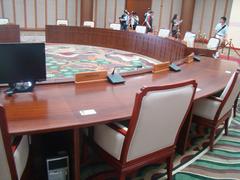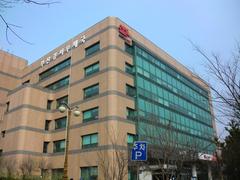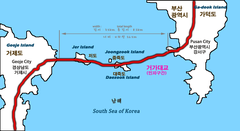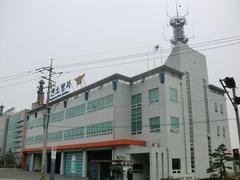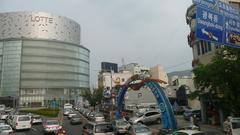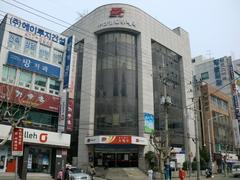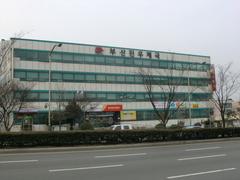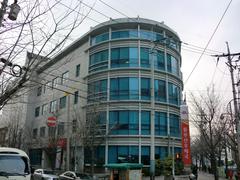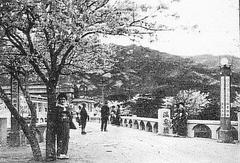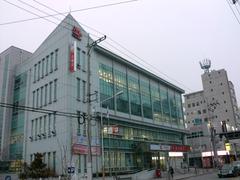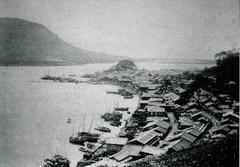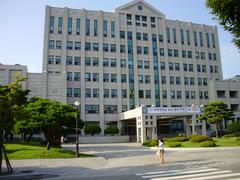Busan Asiad Main Stadium Visiting Hours, Tickets, and Travel Guide
Date: 14/06/2025
Introduction
Busan Asiad Main Stadium is an iconic landmark in South Korea’s vibrant port city of Busan. Renowned for its innovative architecture and pivotal role in major international events, the stadium is more than just a sports arena—it is a cultural hub and a symbol of Busan’s global aspirations. With a capacity exceeding 53,000 seats and a design inspired by maritime motifs, the stadium merges functionality with aesthetic appeal. Visitors can experience world-class sporting events, K-pop concerts, and cultural festivals, as well as explore nearby attractions within the larger Busan Sports Complex. This guide provides essential information on visiting hours, ticketing, transportation, accessibility, and travel tips, ensuring a seamless and enriching experience at Busan Asiad Main Stadium (Busan Metropolitan City; Voyvora; KTripTips; Trippose).
Contents
- Introduction
- History and Major Events
- Architectural Features and Visitor Amenities
- Visiting Hours and Ticketing
- Transportation and Accessibility
- Nearby Attractions
- Practical Visitor Tips
- Frequently Asked Questions (FAQ)
- Conclusion
- Sources
History and Major Events
Conception and Construction
The Busan Asiad Main Stadium was conceived in the late 1990s to elevate Busan’s international profile and host prestigious global events. Construction began in 1997 and concluded in September 2001, with an investment of approximately 226 billion KRW. Its signature ribbon-like architecture was designed to reflect Busan’s maritime heritage and provide an optimal spectator experience (KTripTips).
Key Events and Legacy
- 2002 FIFA World Cup: Hosted several group matches and a quarter-final, introducing Busan to a global audience.
- 2002 Asian Games: Served as the main venue, accommodating over 7,500 athletes from 44 countries.
- Busan IPark Football Club: The stadium is the home ground for this K League team.
- K-pop Concerts and Cultural Festivals: Regularly hosts sell-out shows and large-scale events.
- Upcoming: Set to host ceremonies for the 106th National Sports Festival in October 2025 (Busan City News).
The stadium is part of the broader Busan Sports Complex, which includes baseball, indoor arenas, and training facilities, making it a focal point for sports and entertainment in the city.
Architectural Features and Visitor Amenities
Design and Structure
- Capacity: 53,864 fixed seats (including 252 for guests with disabilities); expandable to 80,000 with temporary seating (Exploring Korea).
- Layout: One underground floor, four above ground, spanning 330,000㎡.
- Roof: Translucent, ribbon-like design supported by 48 pillars, maximizing natural light and visual openness (Voyvora).
- Sightlines: The near-circular layout ensures excellent views from every seat (Visit Korea).
- Accessibility: 72 gateways for efficient entry/exit; barrier-free access throughout, with elevators, ramps, and accessible restrooms (Busan Metropolitan City).
Facilities
- Technology: 2,000 lux lighting for night events, large LED scoreboard, and advanced sound system (Voyvora).
- Amenities: Numerous food and beverage kiosks, fan shops, clean restrooms, and information desks.
- Sustainability: Designed for natural ventilation and reduced energy use; multi-layered field for durability and drainage.
Visiting Hours and Ticketing
Operating Hours
- General Visiting: 9:00 AM to 6:00 PM daily, but hours may shift during events.
- Sports Complex: Open from 06:00 to 22:00, providing access to adjacent facilities (Trippose).
- Event Days: Access may be limited. Always check the official website for current schedules.
Tickets
- Sports and Concerts: Purchase online via official platforms (e.g., Interpark, Yes24) or at stadium counters.
- Guided Tours: Occasionally available; check for updates on the stadium or tourism websites.
- Pricing: Varies by event, with special rates for children, seniors, and persons with disabilities.
Transportation and Accessibility
Public Transport
- Metro: Busan Metro Line 3, Sports Complex Station (Exit 9) and Sajik Station (Exit 1), both offering direct access (Trippose).
- Bus: Multiple city lines (10-1, 12, 19, 44, 50, 57, 80-1, 111-2, 131, 189-1, 1002).
- City Tour Bus: Hop-on-hop-off service available.
- Taxi/Rideshare: Kakao T and MOVV offer convenient transfers (MOVV Mobility Services).
Driving and Parking
- Parking: Approximately 3,100 spaces, including accessible parking. Free from 06:00–22:00 but limited during major events; early arrival is recommended.
Accessibility Features
- Inclusive Design: Accessible seating, ramps, elevators, tactile paving, and multilingual support.
- Transportation Cards: T-money, Cashbee, and Railplus can be used for seamless travel (Busan Transportation Guide).
Nearby Attractions
- Millak Waterfront Park: Scenic relaxation and photo spot.
- Busan Cinema Center: Home to the Busan International Film Festival.
- Gwangalli Beach: Popular for its night views and marine activities.
- Geumgang Park: Hiking and nature at Mt. Geumjeong’s base.
- Dongnae Hot Spring Zone: Historic bathhouses.
- Busan Marine Natural History Museum: Korea’s largest marine museum.
Other nearby facilities in the Busan Sports Complex include Sajik Baseball Stadium and an indoor gymnasium, both offering additional sports and entertainment options (Trippose).
Practical Visitor Tips
- Check Event Schedules: Always confirm visiting hours and ticket availability before your visit.
- Public Transport: Recommended during events due to limited parking.
- Dress for Weather: June is humid; light clothing, sunscreen, and hats are helpful (Asia Highlights).
- Language Support: English signage is available, especially during international events. Translation apps can enhance your experience.
- Safety: Security screening and CCTV are standard; allow extra time on event days.
- Facilities: Multilingual information desks, first aid stations, and lost & found are available.
Frequently Asked Questions (FAQ)
Q: What are the visiting hours for Busan Asiad Main Stadium?
A: Usually 9:00 AM–6:00 PM; may vary on event days. Check the official website for updates.
Q: Where can I buy tickets?
A: Online through authorized platforms or at the stadium box office.
Q: Is the stadium accessible for wheelchair users?
A: Yes, with reserved seating, ramps, elevators, and accessible restrooms.
Q: How do I get there using public transport?
A: Take Busan Metro Line 3 to Sports Complex Station (Exit 9) or Sajik Station (Exit 1); multiple bus lines also serve the area.
Q: Are guided tours available?
A: Occasionally, especially on non-event days. Check announcements for details.
Q: Are there food and retail options inside?
A: Yes, a variety of food stalls, convenience stores, and merchandise shops operate during events.
Conclusion
Busan Asiad Main Stadium is a testament to Busan’s emergence as a global city, blending modern design, accessibility, and a dynamic event calendar. Whether attending a major sporting event, a world-class concert, or simply exploring the stadium’s architecture and nearby attractions, visitors are sure to enjoy a memorable experience. For the latest updates on schedules, tickets, and travel tips, consult official resources and consider using the Audiala app for exclusive content and offers.
Sources and Further Reading
- Busan Metropolitan City Stadium Information, 2023
- Voyvora, Busan Asiad Stadium Architectural Highlights, 2024
- KTripTips, Busan Asiad Main Stadium Overview, 2023
- Trippose, Busan Sports Complex Visitor Guide, 2023
- Busan City News, Upcoming Events at Busan Asiad Main Stadium, 2025
- Exploring Korea, Busan Asiad Main Stadium Travel Tips, 2023
- Busan Transportation Guide
- MOVV Mobility Services
- Asia Highlights – Weather in Busan, June

